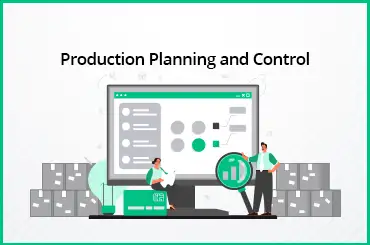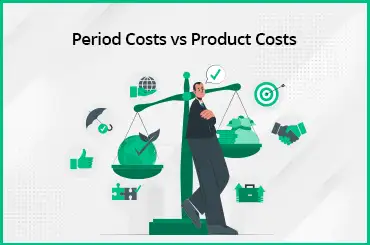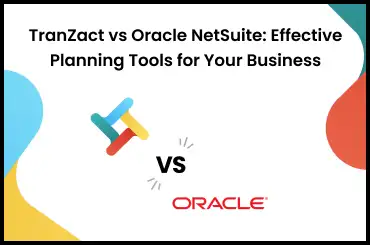What is business intelligence, why does it matter in today's fast-paced business landscape and how can it benefit small businesses? Business intelligence is directly related to how successful firms make strategic decisions and how they collect, analyze and interpret data to gain insight into their operations. Everything is powered by business intelligence (BI).
In this blog post, we'll dive deep into BI, helping to deconstruct this powerful tool. If you're a business owner looking to enhance your company's performance, you can benefit from an understanding of what is business intelligence; and explore how it gives you a competitive advantage that will set you apart from others.
What Is Business Intelligence?
Business intelligence (BI) refers to the technologies, applications, strategies, and practices that organizations use to collect, analyze, and interpret business data. The goal of BI is to transform raw data into meaningful and actionable insights that can be used to make informed business decisions. BI typically involves gathering data from a variety of sources, including internal databases, external market data, and social media, and using analytical tools to identify patterns, trends, and relationships. The insights gained from BI can be used to improve operational efficiency, optimize resource allocation, and drive revenue growth.
How Does Business Intelligence Work?
Business Intelligence empowers organizations with timely, accurate, actionable information to make better choices. It uses various tools and techniques to accomplish this goal, such as data warehousing, mining, and predictive analytics.
Data warehousing is collecting and storing data in one central repository. Data mining involves analyzing the information to uncover patterns or trends. Predictive analytics involves applying statistical models to make forecasts about future events. Business intelligence tools and techniques collect, store, and analyze data to gain insights that can be used for improved decision-making.
It helps answer questions such as "What product will work best with the target consumers?" or "Which location is right to open a new warehouse?" BI helps businesses make data-driven decisions that ultimately lead to enhanced business results.
BI Methods
Various business intelligence methods can be employed to collect and analyze data. Common approaches include:
Data mining: Data mining when described simply is a process of extraction of meaningful information from a large pool of data. It can be employed to recognize trends, patterns, and correlations.
Statistical Analysis: This method involves applying statistical techniques to data analysis. Statistics can be employed to uncover relationships between various variables.
Predictive Modeling: This technique uses historical data to create models to predict future events. Predictive modeling can be employed for demand forecasting, risk identification, and resource optimization.
Dashboarding: Dashboards are visual representations of data that can be used to monitor performance and detect patterns. You may use them to track key performance indicators (KPIs), identify outliers, and compare performance over time.
Data visualization: This technique involves creating visual representations of data to make it simpler to interpret. Data visualization can assist in outlining patterns within large datasets and discovering correlations between various variables.
Data Warehousing: This method involves organizing large amounts of data in an organized fashion, making it simpler to access and analyze. Data warehouses can store both structured and unstructured information from multiple sources.
Example
Business intelligence (BI) refers to collecting, storing, analyzing, and presenting data that allows executives to make informed decisions. Most businesses today utilize some form of business intelligence, but it has gained more popularity as companies strive to gain an edge by taking advantage of the vast amounts of data generated by their operations.
Different business intelligence applications exist, but all share a common objective: providing decision-makers with the data they need to make more informed choices.
Dashboards and Reporting: Dashboards and reports provide users with key performance indicators (KPIs) and other pertinent data points. They can monitor progress toward goals, identify trends, and pinpoint opportunities or areas for improvement. Data Mining and Analysis: Data mining involves employing sophisticated software algorithms to uncover hidden patterns and relationships in data sets. This knowledge can then be utilized for making predictions or recommendations. Predictive Analytics: This type of business intelligence utilizes historical data to create models that anticipate future outcomes. The insights can be utilized when deciding on pricing, inventory levels, or marketing campaigns.
Customer relationship management (CRM): CRM systems enable businesses to manage customer data and interactions. They can track sales leads, manage customer accounts, and offer customer service.
How BI, Business Analytics, and Data Analytics Work Together
To succeed, businesses must comprehend all three concepts and how they interrelate. Each provides a valuable perspective that can aid decision-making, but all must be used together for a complete picture.
Business intelligence uses data to make decisions that resonate with the intended audience. It involves understanding your customers' wants and needs, competitors' actions, and industry trends. With BI, you can enhance marketing campaigns, product development, and customer service processes - virtually any aspect of your business!
Business analytics is a subset of Business Intelligence that analyzes data to uncover patterns and trends. This knowledge can forecast future behavior or outcomes, helping businesses make more informed decisions about resource allocation. Business analytics typically relies on statistical models and sophisticated software programs.
Business intelligence and data analytics are correlated as data analytics is a subset of business intelligence, which analyzes data to uncover insights that can be applied to enhance operations. Data analytics may include identifying process inefficiencies, detecting fraud or security risks, or improving customer segmentation. To do this effectively requires cloud computing and other advanced techniques.
Benefits of Business Intelligence
Business Intelligence is a technology-driven process for analyzing data and providing actionable insights to enable business leaders to make informed decisions. There are many benefits of business intelligence, such as:
Improved Decision-Making
Business intelligence gives business leaders accurate and timely insights to make informed decisions. Through data analysis, BI can detect trends, patterns, and relationships that might otherwise go undetected. With this knowledge, executives can confidently make decisions that enhance operations and profitability for their companies.
Increased Efficiency
BI automates data collection, analysis, and reporting processes. By doing so, BI reduces the time and effort necessary for creating reports and analytics. This improved efficiency enables business leaders to focus on strategic initiatives that drive growth and profitability.
Improved Customer Satisfaction
Business intelligence offers businesses insights into customer behavior, preferences, and needs, enabling businesses to tailor their products and services according to customers' wants. This leads to improved customer satisfaction, loyalty, and retention rates.
Competitive Advantage
Business intelligence gives businesses a strategic advantage by enabling them to detect trends, patterns, and opportunities faster than their rivals. This allows companies to adjust quickly to market shifts and remain ahead of their rivals.
Cost Savings
Business Intelligence allows businesses to identify inefficiencies, waste, and potential improvements that can help reduce costs and boost profitability. By analyzing data, companies can pinpoint areas where costs can be cut without sacrificing quality or performance.
Increased Revenue
BI also helps companies identify new revenue-generating opportunities, such as new markets or products. Businesses can pinpoint areas to expand their offerings and boost profits by analyzing customer behavior and market trends.
Examples of Business Intelligence
To better understand the concept of business intelligence, let us look at some business intelligence examples.
Example 1:
A product database could be populated with information from an Online Transaction Processing (OLTP) system by adding a product line or from price changes for a product. Similarly, a query would be run in a Business Intelligence system to determine whether new products or price changes have increased revenue for the product subject area.
It is possible to execute the following OLTP queries on an advertising database to know if advertisement options have been changed or if the budget for radio should be increased. As a result, the BI system could have been used to obtain information about how many new clients had been added due to changes in radio budgets.
Likewise, the OLAP system could be queried regarding whether changing customer profiles could support higher product costs.
Example 2:
An owner of a hotel gathers statistical information about occupancy and room rates using BI analytical applications. Using this tool, you can find the average revenue generated per room. In addition, it collects customer survey data and market share statistics from each hotel to determine its competitive position.
Analysis of this trend over time allows management to offer discounts on room rentals year after year, month after month, and day after day.
Example 3:
Banks give branch managers access to business intelligence applications. This tool allows branch managers to determine which customers are the most profitable and which should be targeted for further marketing.
Through BI tools, departments can generate analytical reports without depending on information technology staff. Department personnel can also access a richer source of data.
How to Create a Business Intelligence Strategy?
Following some straightforward guidelines, you can construct an effective BI plan that will enable your company to excel.
Establish Your Goals
What do you hope to accomplish with Business Intelligence? Is it better decision-making, increased operational efficiency for some specific functions, or gaining a competitive edge in some new markets? Once these have been established, you can begin crafting your strategy accordingly.
Define Your Data Sources
Where will you get the data necessary data for your BI initiatives? This may include internal sources like transaction databases or CRM systems and external ones like market research reports or government statistics.
Select the Correct Tools and Technologies
When selecting BI tools and technologies, consider factors like ease of use, cost, scalability, and compatibility with existing systems when selecting.
Implement and Test Your Solution
Once you've selected the ideal tools and technologies, it's time to put them into action. This could involve installing software, setting up hardware, or configuring systems and processes. Be sure to thoroughly test your solution before going live with production use.
Monitor and Fine-Tune Your Solution
After launching your BI solution, it is essential to regularly monitor its performance to guarantee it meets expectations. Adjustments can be made, and tweaks can be made as necessary so your system remains optimally performing. This way, you can ensure all objectives are being met.
Following these steps, you can craft a business intelligence strategy to propel your business forward.
Categories of Business Intelligence Analysis
Business intelligence analysis can be broadly divided into four primary types of business intelligence:
Descriptive Analytics: This type of analysis seeks to answer 'what happened?' by generating reports and dashboards that provide an overview of past performance.
Diagnostic Analytics: This type of analysis seeks to answer the 'why did it happen?' question by recognizing patterns and relationships in data that explain why certain events occurred.
Predictive Analytics: This type of analysis utilizes historical data to answer 'What is likely to occur?' and generate forecasts of future trends and behaviors.
Prescriptive Analytics: This type of analysis suggests actions meet specific goals based on predictions about what will occur.
Advantages and Disadvantages of Business Intelligence
The primary advantages of Business Intelligence (BI) include:
Increase Operational Efficiency: By automating manual processes and giving employees access to essential information when they need it most, BI helps organizations run more smoothly.
Improved Customer Service: Business intelligence can assist organizations in understanding their customers' needs and expectations, enabling them to provide the service they deserve.
Enhanced Revenues: By aiding organizations to gain a better insight into their markets and customers and improving operational efficiency, Business Intelligence can contribute to an increase in revenues.
There are a few drawbacks to business intelligence, such as:
High Cost of Implementation and Upkeep. Some Business intelligence tools can be costly to purchase and keep running, especially for smaller businesses.
Skilled Staff Needed. In order to maximize the benefits of business intelligence tools, it's necessary to hire personnel that possesses expertise in using them. However, this may pose a challenge for small businesses that need more funds to hire such personnel.
Data Overload Risk. With so much available data, it's easy to become overwhelmed with information by employees. This could cause analysis paralysis and prevent decision-makers from being able to make timely decisions based on the data.
Misuse Potential. Business intelligence tools have the potential to be misused if they are not utilized correctly, such as by unfairly targeting specific groups of customers or employees.
Business Intelligence and Big Data
Business intelligence is one of the most essential strategies used to derive important decisions through the use of data. This can be accomplished through various techniques, including big data.
Big data refers to the vast amounts of information businesses now possess. This data can come from many sources, such as social media, website traffic, and customer transactions. Unfortunately, it's often difficult to sift through all this clutter to uncover valuable insights to guide better business decisions.
The business intelligence process plays an integral role in this process. Business intelligence techniques can be employed to analyze large datasets, extracting valuable insights that businesses require. With this data, businesses can make better-informed decisions about everything from product development to marketing strategies.
Business Intelligence Platforms
Platforms and tools that facilitate self-service business intelligence can improve the analysis process. With this method, users can visualize and understand their data without having a great extent of technical knowledge.
BI platforms offer many ad hoc reports, data visualization for easy presentation and understanding, and dashboard customization options. Our recommendations below will help you choose the right business intelligence platform for your business.
Choosing a BI Platform
Successful implementation of BI depends on choosing the right platform. When selecting your tool, you should remember the key features that are most beneficial to your business. It's important to consider how user-friendly the platform is, and how flexibly it can be deployed with options for smart dashboards and visualizations.
Also check if it provides insightful insights, metric alerts for good and bad performance, power of advanced cloud technology built-in into the system, seamless application integration, interconnectivity of data and application embedding.
A Dashboard for Business Intelligence
A dashboard is arguably the most helpful tool in BI, aggregating and displaying complex data in one place. Dashboards can be used for a variety of purposes, such as stakeholder engagement or complex analysis.
A dashboard must meet all your needs and also offer an interactive experience, a real-time data feed, and interactions that can be customized. In addition, it should provide templates for standard documents with the ability to share.
Business Intelligence Best Practices
Business intelligence best practices involve using data to make educated decisions about your company and to decide where to allocate resources. When it comes to business intelligence best practices, there are a few essential points to remember:
- Gather the Correct Data: It may seem obvious, but collecting accurate information for your purposes is very essential to save time and effort.
- Draw from Multiple Sources of Data: Don't rely on one source, like financial reports, when making decisions; utilize as many different sources as possible including customer surveys, and social media analytics to get a comprehensive picture of what's happening.
- Analyze the Data Correctly: Once you have collected accurate information, you must analyze it accurately to draw meaningful conclusions. This involves employing appropriate statistical techniques and understanding how to interpret results accurately.
- Communicate Your Findings Effectively: Next, you must communicate those insights clearly so others can comprehend them and act upon them accordingly. This could involve creating visuals or writing reports in plain language so non-experts can comprehend them easily.
Implementing Business Intelligence Seamlessly
For businesses, maintaining vast data points on inventory, and production can be a challenge. It becomes difficult for them to expand their offerings effectively when they have to keep track of many data points.
TranZact offers a smart business intelligence dashboard to ensure an in-depth and real-time overview of key updates on inventory, across transactions and accounts. It helps to visualize data with simple graphs and charts, enabling you to visualize data effortlessly.
FAQs on Business Intelligence
1. What is meant by business intelligence?
The function of business intelligence (BI) is to collect, store, and analyze the data generated by a company's operations. The term 'business intelligence' encompasses the analysis of process data, the measurement of performance, and the analysis of descriptive data.
2. What are business intelligence examples?
An aggregate revenue per room can be calculated using business intelligence (BI). Each hotel's competitive position in various markets is also determined by collecting market share statistics and customer survey data via BI insights.
3. What are the four concepts of business intelligence?
Organizations use business intelligence to make better decisions using analytics, data mining, visualization, and data tools.
4. What is the role of business intelligence?
Business intelligence services provide key insights that shape the company's future and operations. Analysts are responsible for extracting valuable insights from a company's data and the insights gained from these analyses are then used to guide critical business decisions.















